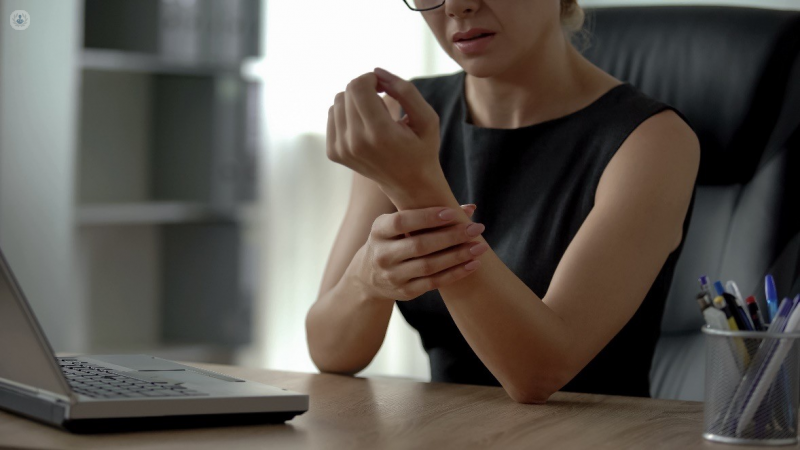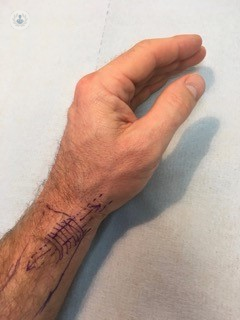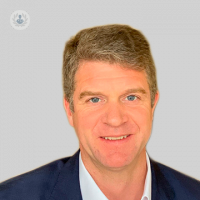A quick look at De Quervain’s syndrome
Autore:De Quervain’s syndrome can happen to anyone, but it appears that women are three times more susceptible to the condition than men. Symptoms include pain and swelling near the base of the thumb. Activities like pinching, grasping and wringing clothes can make the pain worse.
Plastic surgeon Mr Oliver Harley tells us more about De Quervain’s and what happens to cause this condition.

De Quervain’s syndrome is inflammation which affects a specific tendon ‘compartment’ on the back of the thumb and the side of the wrist. Tendons are the biological puppet strings which make your fingers and thumbs move. To do this, they slide back and forth in a narrow channel next to the edge of the forearm bone (radius) and, as a result, this zone can become inflamed.
Patients will have pain in the wrist near to the base of the thumb. The pain will usually be worse when the hand /thumb /wrist is used. There are other conditions which can also cause pain in this part of the hand. Arthritis in the thumb or the wrist is common. It may be possible to have both arthritis and de Quervain’s syndrome at the same time.
![]()
What causes de Quervain’s syndrome?
It is unclear as to why some people get this condition and others don’t. Females aged 40-60 are most often affected but it can affect men and women of all ages. A common scenario is for mothers with babies to develop de Quervain’s and this may be something to do with the movement and positioning of the thumbs when picking up the baby.
Overuse of the tendon, particularly with repetitive movements used in the workplace or with a particular sport or a simple strain could also bring on the condition.
What exercises can help de Quervain’s tenosynovitis?
There are various exercises like thumb lifts and wrist extensions which encourage mobilisation and control the loading of the thumb and wrist, although there is no single specific exercise which will guarantee an improvement in this condition. A physiotherapist can assist with exercises and outline an exercise plan.

Tendons move back and forth in the channel
of the radius bone causing inflammation and pain
How does de Quervain’s tenosynovitis go away?
Many cases will resolve without any specific treatment. Anti-inflammatory painkillers and rest or avoidance of painful activities is the first step. Hand therapy and resting splints may be tried.
If these measures fail, the next step is to try a steroid injection. Cases which persist despite steroid injections can be treated with a small day-case surgery with the patient awake. The surgery will release the affected tendons from the narrow channel next to the radius bone.
Is it the same as trigger finger?
Trigger finger is caused by the inflammation of tendons in the palm of the hand which flex the fingers or the thumb. Although it affects a different tendon, it has the same background cause and is treated in a similar manner.
Do you have pain in your thumb? Mr Oliver Harley will be happy to offer you his guidance and treatment.


